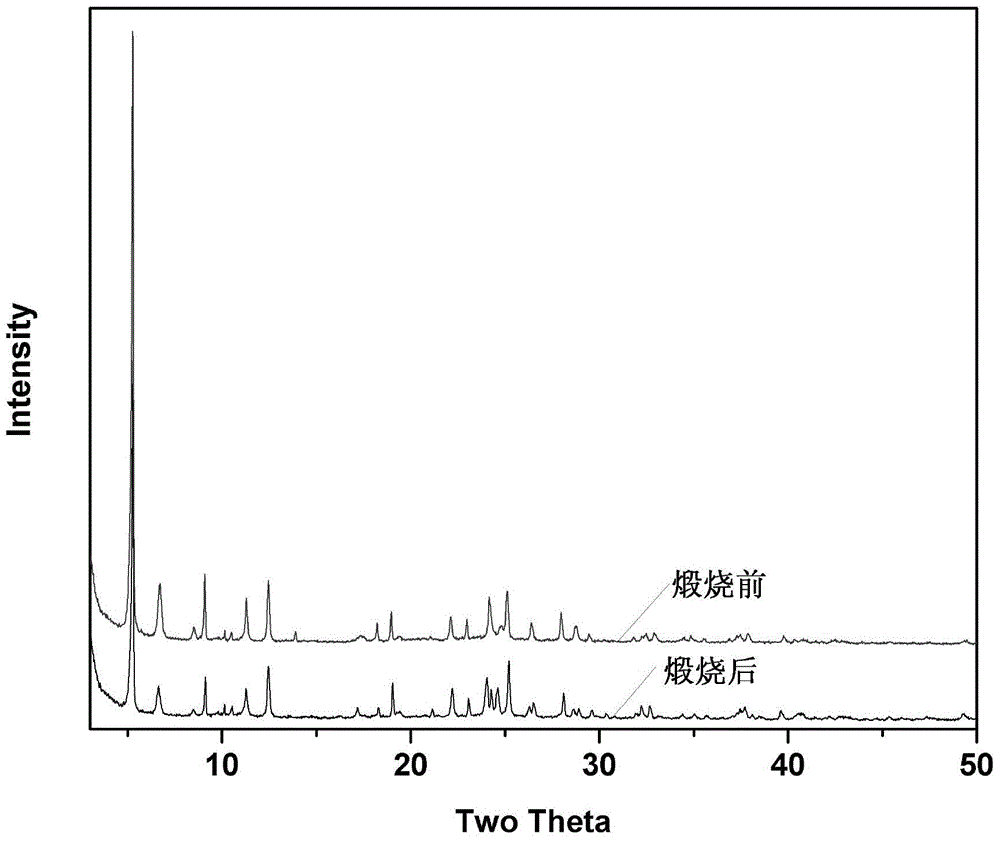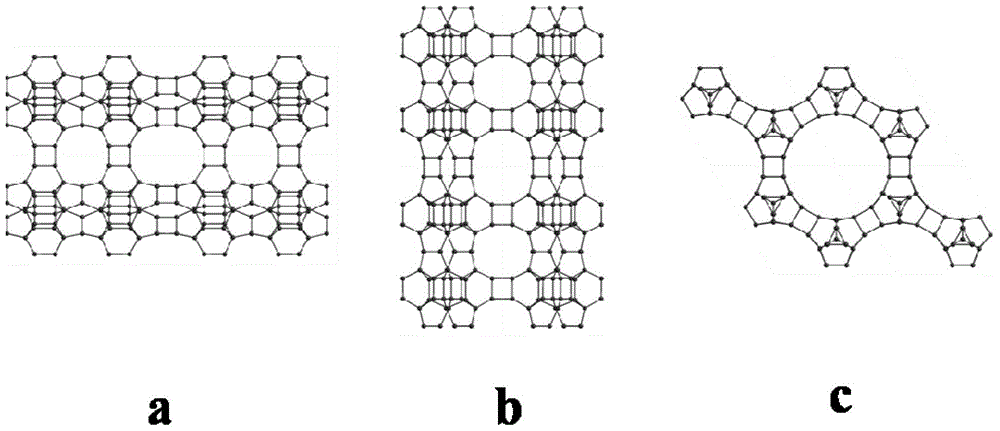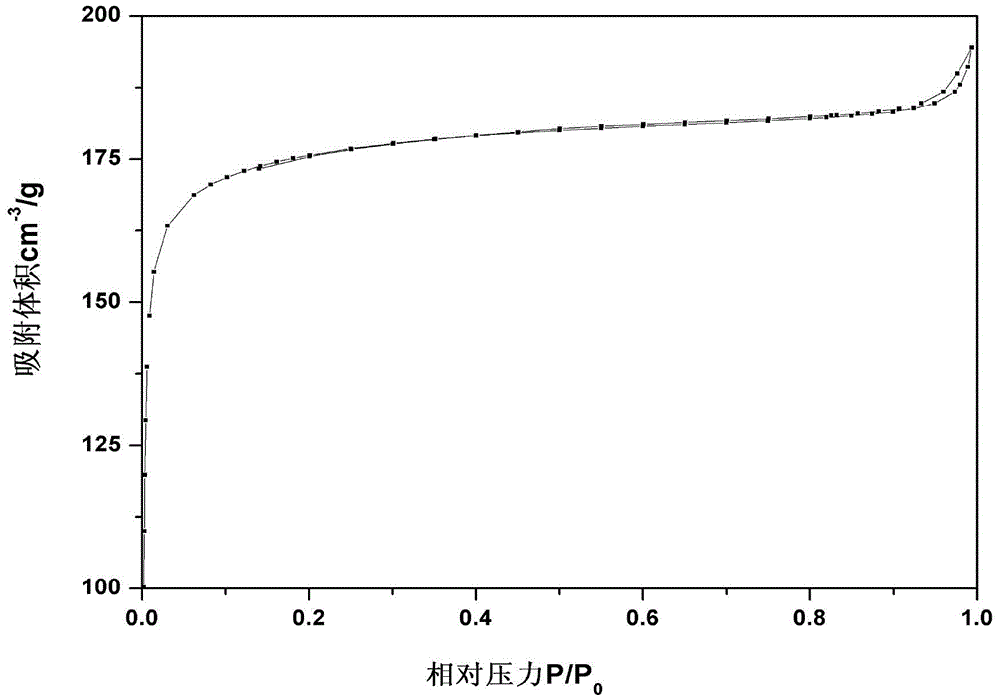Super-macroporous silicate molecular sieve NUD-1 and preparation method thereof
A technology of porous silicate and molecular sieve, which is applied in the direction of molecular sieve catalysts, molecular sieves and base exchange compounds, chemical instruments and methods, etc., and can solve the problems of difficult crystallization and limited number of sieves
- Summary
- Abstract
- Description
- Claims
- Application Information
AI Technical Summary
Problems solved by technology
Method used
Image
Examples
Embodiment 1
[0034] Embodiment 1: Taking the template agent 2 in Table 2 as an example, the synthesis process of the template agent is illustrated. Mix 16.997g of benzyl bromide and 75ml of tetrahydrofuran in a 250ml round-bottomed flask. Under reflux, add 1,2-dimethylimidazole in tetrahydrofuran (9.607g / 75ml) dropwise to the mixture. The system was reacted under stirring for two days, and the reaction mixture was rotovaped to remove the solvent to obtain a crude product, which was recrystallized from ethanol to obtain 25.274 g of the product, with a yield of 95%. The product was tested by liquid NMR (D 2 O) and electrospray mass spectrometry characterization, confirmed as the target compound.
[0035] The obtained product was dissolved in 100 ml of deionized water, and column exchange was carried out through 717 strong basic anion exchange resin to obtain an aqueous solution of the template agent 2 in the form of hydroxide. Weigh an appropriate amount of this solution, calibrate it with...
Embodiment 2
[0037] Embodiment 2: according to molar ratio 1SiO 2 : 1GeO 2 :0.8ROH:0.8HF:10H 2 The ratio of O to prepare the gel synthesized by molecular sieves, the general steps are as follows: Weigh an appropriate amount of template agent 7 solution after exchange, add 5mmol (0.523g) of germanium dioxide powder to it, stir for about half an hour to make the added germanium dioxide Dissolve completely, add 5mmol (1.042g) of tetraethyl orthosilicate later, stir at room temperature for about two hours to completely dissolve the tetraethyl orthosilicate, then add the designed amount of hydrofluoric acid solution, stir evenly, and mix the gel Place under an infrared lamp or in an oven at 80°C to remove excess solvent to a theoretical weight. The final reaction gel was transferred to a 15ml stainless steel reaction kettle with polytetrafluoroethylene lining, and reacted at 160°C for 30 days under sealed conditions. The product was washed twice with water and twice with ethanol, and dried fo...
Embodiment 3
[0038] Embodiment 3: according to molar ratio 1SiO 2 : 1GeO 2 : 0.5ROH: 0.5NH 4 F: 5H 2 The ratio of O to prepare the gel synthesized by molecular sieves, the general steps are as follows: Weigh an appropriate amount of template agent 4 solution after exchange, add 5mmol (0.523g) of germanium dioxide powder to it, stir for about half an hour to make the added germanium dioxide Dissolve completely, add 5mmol (1.042g) of tetraethyl orthosilicate later, stir at room temperature for about two hours to completely dissolve the tetraethyl orthosilicate, then add the designed amount of ammonium fluoride, stir evenly, and place the mixed gel Under infrared light or in an oven at 80°C, remove excess solvent to theoretical weight. The resulting reaction gel was transferred to a 15ml stainless steel reaction kettle with a polytetrafluoroethylene liner, and reacted at 150°C for 15 days under sealed conditions. The product was washed twice with water and twice with ethanol, and dried for...
PUM
 Login to View More
Login to View More Abstract
Description
Claims
Application Information
 Login to View More
Login to View More - R&D
- Intellectual Property
- Life Sciences
- Materials
- Tech Scout
- Unparalleled Data Quality
- Higher Quality Content
- 60% Fewer Hallucinations
Browse by: Latest US Patents, China's latest patents, Technical Efficacy Thesaurus, Application Domain, Technology Topic, Popular Technical Reports.
© 2025 PatSnap. All rights reserved.Legal|Privacy policy|Modern Slavery Act Transparency Statement|Sitemap|About US| Contact US: help@patsnap.com



